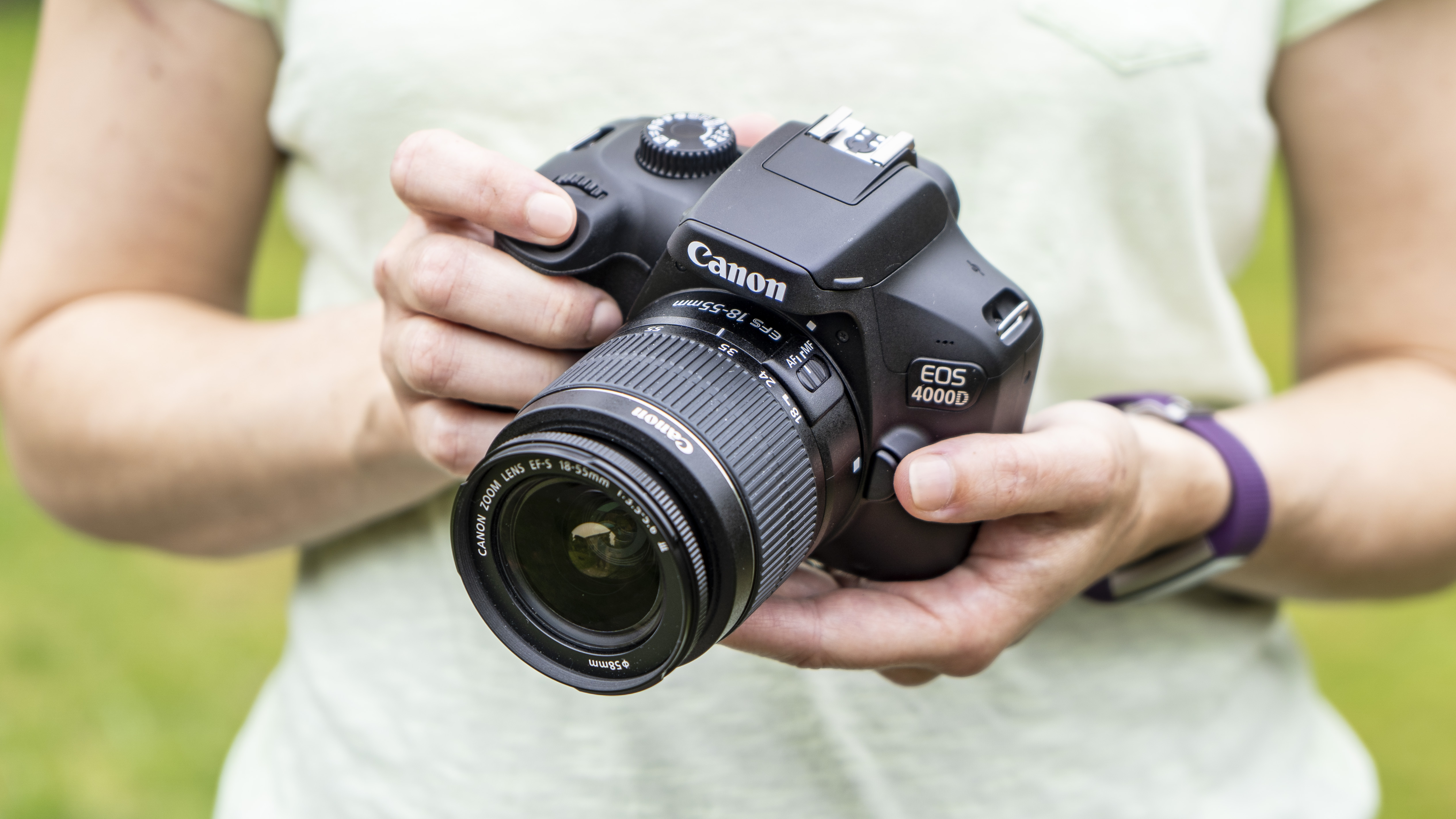Why you can trust TechRadar
Build and handling
- Plasticky feel overall
- Logical button placement
- Plastic lens mount
The EOS 4000D looks very similar to its entry-level sibling, EOS 2000D, but there are a number of differences when you look a little closer.
For starters, while there's a textured coating on the chunky front grip, Canon has done away with it for the rear thumb rest, and the lens mount is plastic, rather than the more durable metal of the EOS 2000D; if you're not often going to be switching lenses this might not be a concern, but if you're looking to regularly swap optics it's something to consider, as plastic is more susceptible to wear.
While these design choices do bring a slight weight saving over the EOS 2000D, they make the EOS 4000D feel even more plasticky.
The EOS 4000D has also done away with a dedicated on/off switch – instead there's now an 'off' setting on the mode dial on the top of the camera. Speaking of the mode dial, the normally green-labelled 'Scene Intelligent Auto' mode is now the same color as all the other settings, allowing Canon to cut costs further, and yet more penny pinching has been carried out at the rear, with the icons for the controls printed on the body, rather than on each individual button.
All in all it's not what we'd expect from a DSLR in 2018
That said, the button configuration is easy to understand and navigate for the new user, while the 'Q' (short for Quick Menu) button enables you to quickly access and adjust commonly used settings.
As we've also moaned about with the EOS 2000D, the absence of Canon's clean-looking graphical interface, as found on the EOS Rebel T7i / EOS 800D and EOS Rebel SL2 / EOS 200D, is disappointing.
All in all it's not what we'd expect from a DSLR in 2018. The reduction in screen size to 2.7 inches, together with the drop in resolution, makes you feel like you're stepping back in time by about five years when you use this camera.
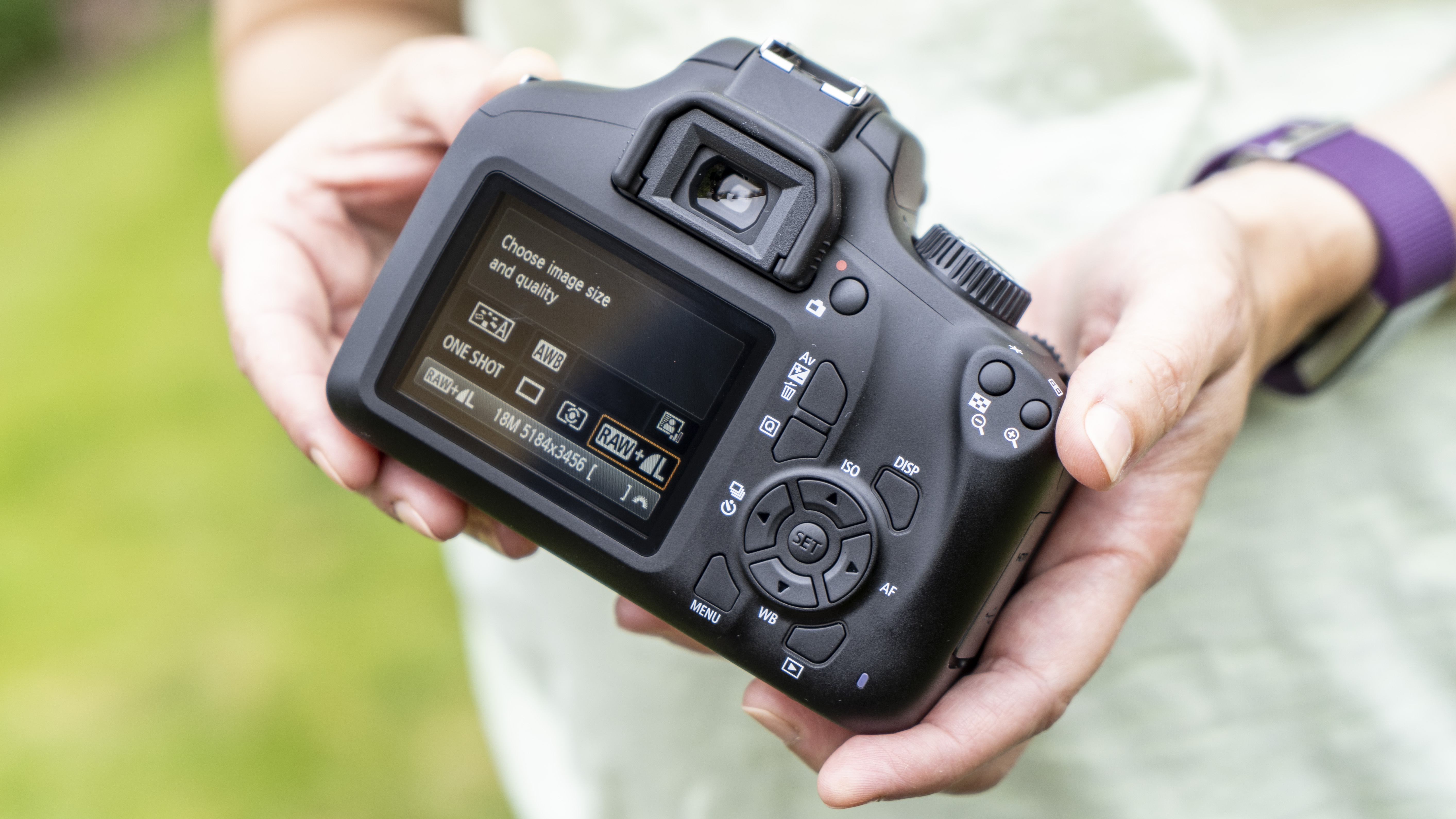
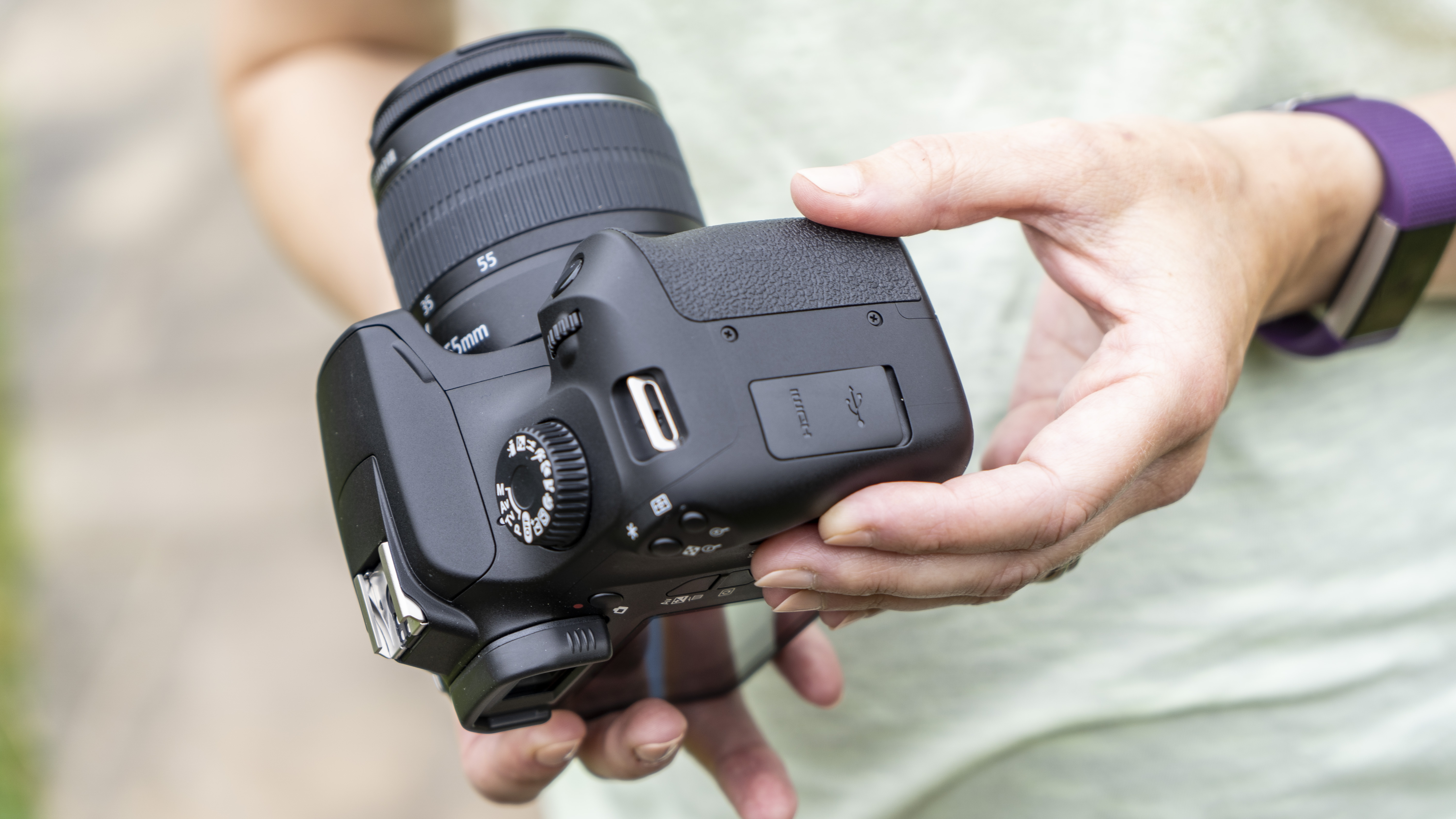
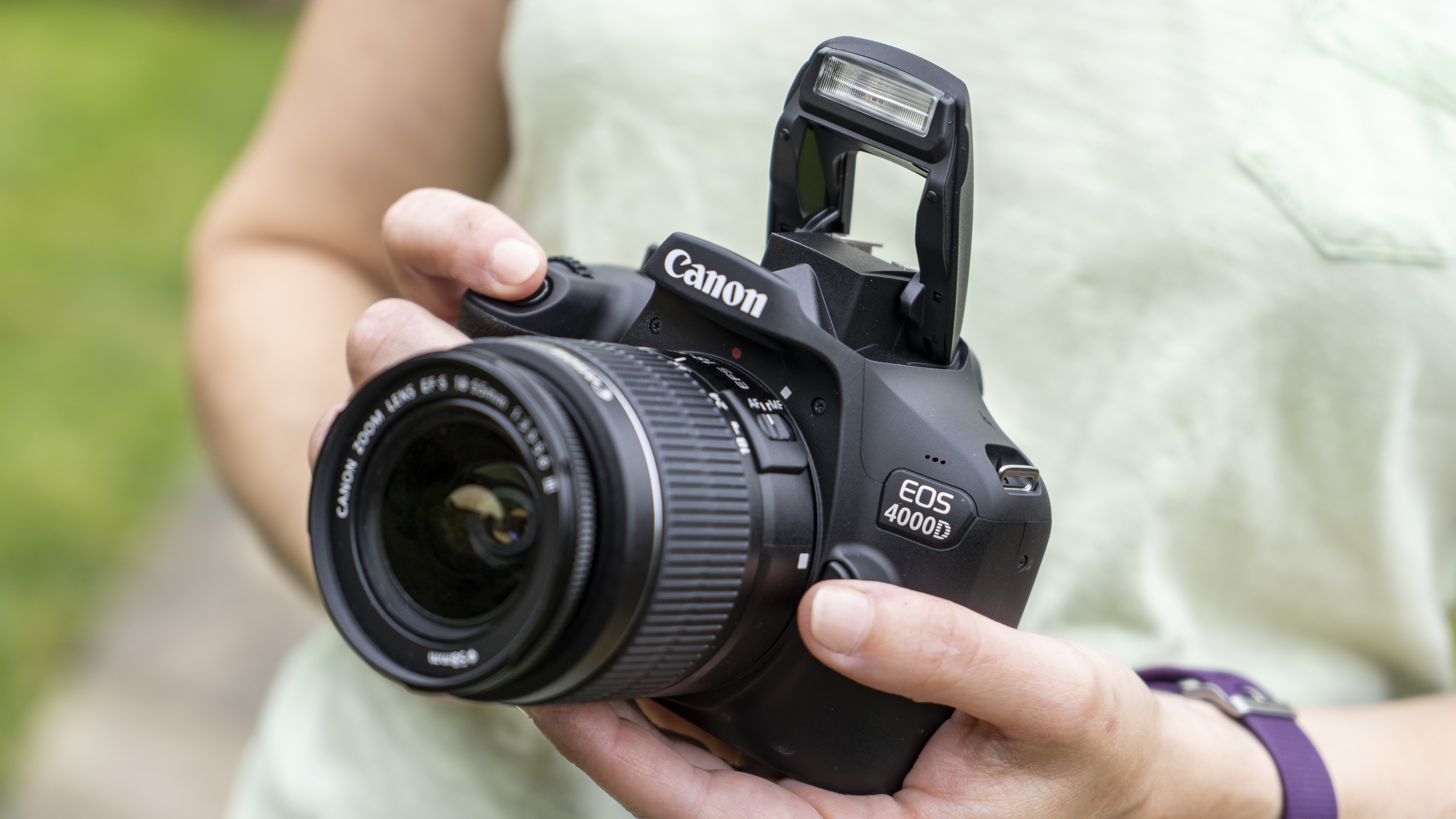
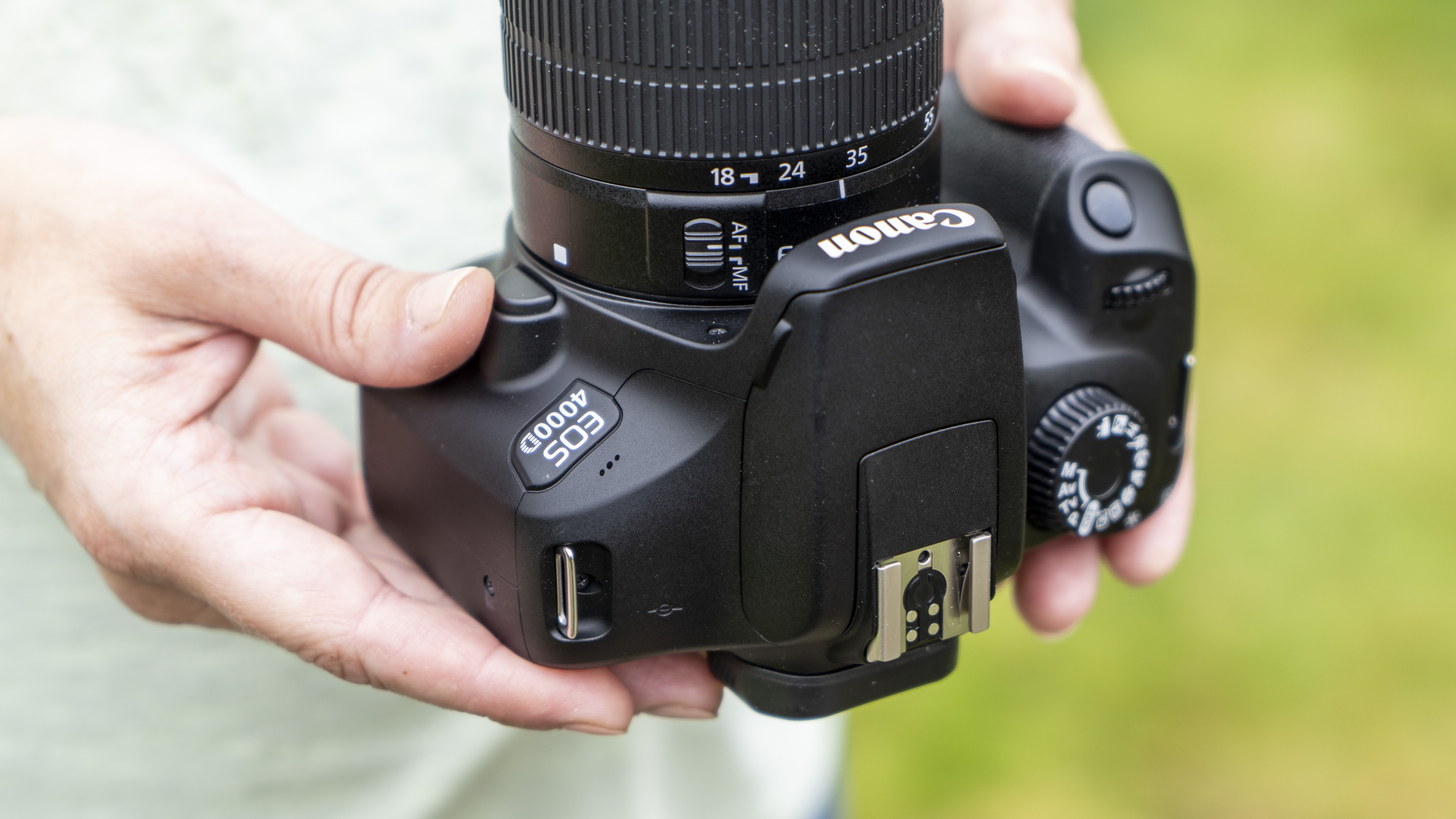
Autofocus
- 9-point AF system feels dated
- Coverage biased towards center of frame
- Sluggish Live View performance
The EOS Rebel T100 / EOS 4000D uses an AF system that's the best part of 10 years old, and sure enough the 9-point system feels really dated. Coverage is basically limited to the centre of the frame, with the points in a diamond formation, so be prepared to re-frame your subject if they're off-centre.
Performance-wise, with a single (and more sensitive) cross-type sensor at the center of the array the system will be fine for general shooting with static subjects, but it may struggle when light levels drop or when subjects are moving.
Canon's brilliant Dual Pixel CMOS AF technology has always impressed, allowing for quick focusing speeds in Live View mode (using the rear screen rather than the viewfinder); this is something a lot of rival DSLRs struggle with, so it's disappointing not to see it on the EOS Rebel T100 / EOS 4000D.
Instead, you're stuck with sluggish focusing speeds, a far cry from the performance of even some of the most affordable mirrorless cameras – not that you'll want to use Live View that much given the poor screen.
Current page: Build, handling and AF
Prev Page Introduction and key features Next Page Performance and image qualityPhil Hall is an experienced writer and editor having worked on some of the largest photography magazines in the UK, and now edit the photography channel of TechRadar, the UK's biggest tech website and one of the largest in the world. He has also worked on numerous commercial projects, including working with manufacturers like Nikon and Fujifilm on bespoke printed and online camera guides, as well as writing technique blogs and copy for the John Lewis Technology guide.
